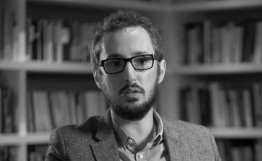Keep our news free from ads and paywalls by making a donation to support our work!

Notes from Poland is run by a small editorial team and is published by an independent, non-profit foundation that is funded through donations from our readers. We cannot do what we do without your support.
Poland’s government has asked Germany to return a ring that once belonged to 16th-century Polish King Sigismund I. The item is one of hundreds of thousands of artworks and other artefacts looted during the German and Soviet occupation of World War Two that remain unaccounted for.
Speaking to the Rzeczpospolita daily, Piotr Jędrzejowski, spokesman for the Polish ministry of culture and national heritage, confirmed that Poland had in March 2023 submitted a restitution request to the Pforzheim Jewellery Museum, where the ring is held.
That was followed in October 2024 by an application submitted to the German foreign ministry via the Polish embassy in Berlin.
“We are using all available legal mechanisms aimed at returning the object to the territory of Poland,” Jędrzejowski told the newspaper.
🔴 TYLKO U NAS:
Zrabowany pierścień króla Zygmunta Starego jest w niemieckich rękachhttps://t.co/YLIZ1u1mRt— Rzeczpospolita (@rzeczpospolita) June 21, 2025
Sigismund I, who is nicknamed “the Old” to distinguish him from his son, King Sigismund II Augustus, was a member of the Jagiellonian dynasty and ruled Poland and Lithuania from 1506 to 1548.
His ring – around 2.6 cm in diameter and decorated with a large, square-cut diamond – later came to be part of the collection of Princess Izabela Czartoryska, who in the late 18th century founded Poland’s first museum, which today exists as the Czartoryski Museum in Kraków.
If the ring were restituted to Poland it would go to the National Museum in Kraków, which in 2016 signed an agreement with Prince Adam Karol Czartoryski to take control of the family’s collection, including any looted items later recovered.
The museum houses, among others, Lady with an Ermine by Leonardo da Vinci and Landscape with the Good Samaritan by Rembrandt, the latter of which was also looted during the war but later restituted.
Rzeczpospolita notes that the fate of King Sigismund I’s ring was first traced by Ewa Letkiewicz, a professor of art history at Maria Curie-Skłodowska University in Lublin, in a 2007 academic article.
She found that the item had been acquired by Pforzheim Jewellery Museum in 1963 as part of a collection previously owned by artist and private collector Heinz Battke. He had in turn bought it sometime between 1954 and 1962 from an unknown owner.
The Polish newspaper says that Poland’s efforts to secure the return of the ring may be hindered by the fragmentary information about it as well as the fact that they have only a poor-quality photo of the item from before the war.
In August 1939, just before Germany’s invasion of Poland, the Czartoryski Museum hid the ring – along with other valuable items, including paintings by Raphael and Rembrandt – at a palace in the small town of Sieniawa, where they were bricked up in the basement.
But, as a result of a tip-off, the hiding place was discovered and the items were looted by the Germans during the night of 17-18 September 1939. Many of the plundered items remain missing.
Two historical paintings stolen from Poland during the Nazi-German occupation of WWII, and which subsequently disappeared for decades, have been returned after being discovered at a museum in Spain https://t.co/QP5ls2ESYX
— Notes from Poland 🇵🇱 (@notesfrompoland) January 26, 2023
Poland has in recent years stepped up efforts to secure the return of historical and cultural items looted by Germany and the Soviet Union during the war.
Last year, the Polish culture ministry confirmed that efforts are underway to restitute 73 historical documents – including a 15th-century peace treaty between Poland, Lithuania and the Teutonic Knights – currently held in a Berlin archive.
In 2023, Poland secured the return from Spain of two paintings by Flemish master Dieric Bouts from the 15th or 16th century that had been part of the Czartoryski collection before being looted by the Germans during the war.
Poland is seeking the restitution of 73 historical documents – including a 15th-century peace treaty between Poland, Lithuania and the Teutonic Knights – that were looted by Germany in WWII and are currently being held in a Berlin archive https://t.co/nXjusudY6O
— Notes from Poland 🇵🇱 (@notesfrompoland) October 11, 2024

Notes from Poland is run by a small editorial team and published by an independent, non-profit foundation that is funded through donations from our readers. We cannot do what we do without your support.

Daniel Tilles is editor-in-chief of Notes from Poland. He has written on Polish affairs for a wide range of publications, including Foreign Policy, POLITICO Europe, EUobserver and Dziennik Gazeta Prawna.



















